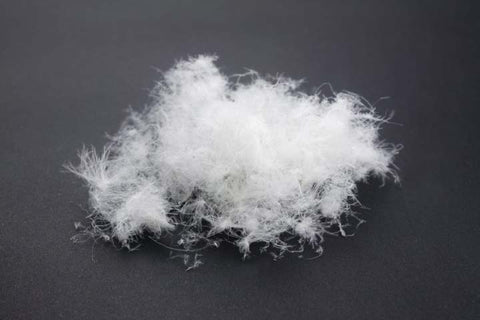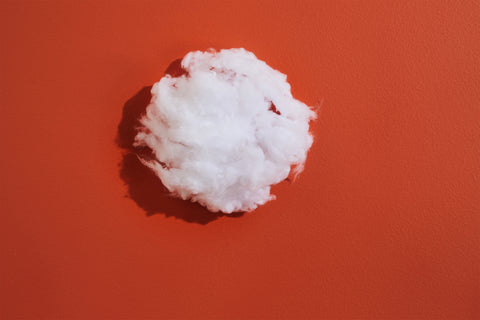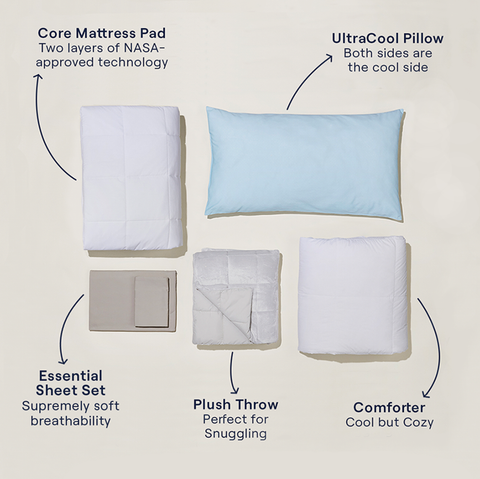
Cooling Pillow Buying Guide
There’s nothing worse than waking up in a puddle of sweat; your pillow soaked through; your hair stuck to your skin. This is especially troublesome when you have flipped your pillow over to the “cool side” several times throughout the night and still remain hot.
If night sweats like these sound all too familiar, a cooling pillow might be the answer to your problems.
While the pillows on your bed most likely account for the smallest surface area of all the bedding items that are present, they can have a great effect on the comfort of your sleep. Most people notice perspiration on their face and hair much more quickly than on other areas of the body, and as such, can cause more noticeable discomfort. A cooling pillow may be an important product in order to help with temperature regulation during sleep, but how do you know what type to purchase?
Read our cooling pillow guide or take our quiz below to find the best cooling pillow for you.
What to look for in a cooling pillow
There are three things to consider when shopping for a cooling pillow: fill, fabric, and cooling technology.
Fill
The fill of a pillow is important on several levels. In terms of functionality, the main purpose of a pillow is to provide support for the head and neck. It’s important to consider your typical sleeping position in order to determine what level and type of fill you may need. If you sleep on your back or stomach you will not need the pillow to be nearly as firm as if you were a side sleeper. The loft provided by a firm pillow helps to compensate for the raised position of your head because you are laying on your side.Down fill is easily the warmest and is traditionally considered the fluffiest of the fill types. Down fill is created using the soft, under-layer of feathers from ducks, geese, and other birds. The most commonly used down feathers are those gathered from ducks. If a down pillow becomes compressed or lumpy, the down fill can be easily reshaped. So if you are someone who likes to fluff their pillows each time they get into bed, choosing a down pillow might be a great option. On the other hand, down is not normally hypoallergenic. This means that if you have severe allergies, down fill inside your pillow might not be conducive to a good night’s sleep. The other aspect of down that might not always go into the “plus” column is the heat retention. Down may make your head a bit too warm, and if you are looking for a cooling pillow that can be a problem.
Polyester fiberfill has easily become the most common type of pillow fill on the market. It is inexpensive to produce, hypoallergenic, can be easily manipulated, and provides an extremely consistent level of comfort. While Polyester is not known as a very breathable fabric, when it is in a fiberfill form it can actually outperform down fill in terms of heat retention. By this I mean polyester fiberfill might actually provide a cooler sleep surface throughout the night. The other plus for polyester as a fill is that it does not retain moisture, so when you sweat it doesn’t just stay in your pillow. It will evaporate more quickly.
Foam fill has become extremely popular over the past 5-10 years. The memory foam craze has picked up a great deal in the mattress market, but many people started out by buying a memory foam pillow to give it a shot. There are also memory foam pillows that use cut up memory foam inside their case to create a softer, less structured feel. But these pillows are literally using the leftover scraps and rejected materials produced during the manufacturing of their well shaped counterparts, meaning you are getting a low quality product that is not designed to reduce heat buildup. Memory foam tends to be plush, but hot. You sink into this cloud like surface, falling asleep, only to wake up drenched in sweat. That is why many of the companies creating memory foam pillows are infusing “gel” technology into them to create a cooler surface.



Our Recommendation
Which fill is best for you?Polyester or Polyester Blend
Polyester or polyester blends, such as those found in the Cumulus Pillow by Slumber Cloud tend to work very well as cooling pillows. Foam may be a hot trend, but in the end it might prove to be a fad. Polyester fill is hypoallergenic, so it can work well for a large portion of the population.
















UltraCool Pillow
Pillow Shell Fabric
The outer fabric surrounding the fill of a pillow is called the shell. The shell of a pillow can be created using many different kinds of material. The material used in the construction of this shell can make a huge difference in the performance qualities and levels of comfort.As a fabric, cotton is probably the most common material used in the shells of pillows. This is because of its breathability and softness. Most people associate high thread-count cotton fabric as a quality material and they are right. When used in the shells of pillows, cotton can help provide sufficient ventilation and comfort for your head.
When used in the fabric shell of a pillow, polyester is almost always used as a blend. It is actually very rare that this happens, because polyester is not breathable as a fabric. The reason it does get used from time to time is the fact that it does not retain water like fibers such as cotton.

Viscose fiber can be a great addition to a blended fabric for pillows. This fiber is breathable, non-absorbent, hypoallergenic, and soft. Neither viscose or polyester are commonly used for this purpose, but if they are it can provide a different pillow experience.
Another type of Viscose that is gaining popularity, but hasn’t really shown any difference from the rest, is bamboo sourced Viscose. There is a lot of controversy surrounding bamboo, because of false marketing claims and mislabeled products.




Our Recommendation
Which fabric type is best for you?Cotton
The vast majority of pillows use cotton shells. There is very little reason to go looking for a pillow with a different blend of fibers in the shell as cotton provides the most comfort and breathability when used correctly.






Core Down Alternative Pillow
Upgrade your sleep with our Core Down Alternative Pillow. Infused with NASA-engineered tech, it offers unmatched support and softness for ultimate comfort.
Technology
The development of different technologies have helped create a variety of cooling bedding options. These different methods of bringing cooler temperatures to sleeping environments are certainly the most obvious differentiators of cooling pillows.Temperature Regulating Technologies, such as Outlast® can be applied to bedding products in a variety of different ways. While gel and moisture wicking technology is limited in the ways it can be constructed into the product, temperature regulating technologies can be injected into fibers for use in fills and fabrics, coated onto fabrics, and even sprayed onto foam.
The best part of this technology is that it isn’t meant to just feel cold either. It works with your external body temperature to help regulate your internal core temperature throughout the night. While you sleep, your body temperature rises and falls naturally. The temperature regulating technology actually helps prevent your body from swinging too far in one direction throughout the night by absorbing excess heat and then releasing it once the temperature drops.
Another popular technology employs the use of moisture wicking fabrics. These fabrics work by wicking moisture away from skin through the fabric itself, in order to evaporate more easily, thereby lowering body temperatures.
Moisture wicking technology achieves its wicking quality through the use of specific raw materials and weave or knit patterns, limiting the construction method and characteristics it can produce.
In terms of using moisture wicking technology in pillows, the shell of a pillow may be able to wick away the sweat from your head and neck but won’t actually have an effect on reducing heat until you are already so hot that you are sweating. This is what makes moisture wicking a reactive heat regulation technology.
Gel technology is all rage right now. The reason it has gained in popularity over the past 5-10 years is its signature look and feel. Gel is especially common in cooling pillows that employ memory foam because it is easy to apply in that situation. Gel technology kind of needs to be applied to a firm surface, because the material itself is almost solely created as a solid layer. The problem with gel is that while it feels cool to the touch, it does not actually help your body regulate its own temperature. It simply feels cold until it doesn’t and then you are back to being hot.
Almost all fabrics that are made from bamboo are actually created using viscose fiber. The viscose fiber is made by taking bamboo as a raw material and processing it through chemical means to extract the cellulose and turn it into a regenerated fiber.
Manufacturers of bedding products using bamboo based viscose have marketed them as products that are hypoallergenic, antimicrobial, and anti-fungal, as if other viscose products are not. This seems a bit dishonest, because bamboo viscose has almost no differentiation from other types of viscose generally created from wood pulp.
That being said, viscose is a fiber that can be extremely effective at increasing the performance of your bedding and can be integrated in a number of blends.




Our Recommendation
Which tecnhology offers the best cooling?Temperature Regulation Technology
Temperature regulating technology is superior to moisture wicking when added to cooling pillows because it absorbs and disperses heat while you sleep. Consider a pillow with Outlast® Technology.


















Adjustable UltraCool Pillow
Our Adjustable UltraCool pillow offers customizable firmness with two inserts and zippered gussets, blending squishy fiberfill with supportive memory foam for cool comfort all night.
Back sleepers: Use both inserts and keep the gussets zipped closed
Side sleepers: Use both inserts and unzip the gussets
Stomach sleepers: Remove 1 insert of your choice and unzip the gussets

Build Your Dream-Worthy Bed
We've got everything you need to make a bed you can't wait to tuck into.
Every layer utilizes Outlast®, the world’s only textile temperature regulation technology to have received the Certified Space Technology™ quality mark by the renowned Space Foundation.
Bonus Pillow Recommendation
Checkout this Hybrid pillow, combining the best of two filling materials:






Hybrid Pillow
For Every Type of Sleeper.
The Hybrid Pillow is two pillows in one, bringing you plush comfort and the customizable support of a removable shredded memory foam core. No more fighting flatness or wrestling with lumps – just add or remove the inner core to personalize your perfect level of support.


